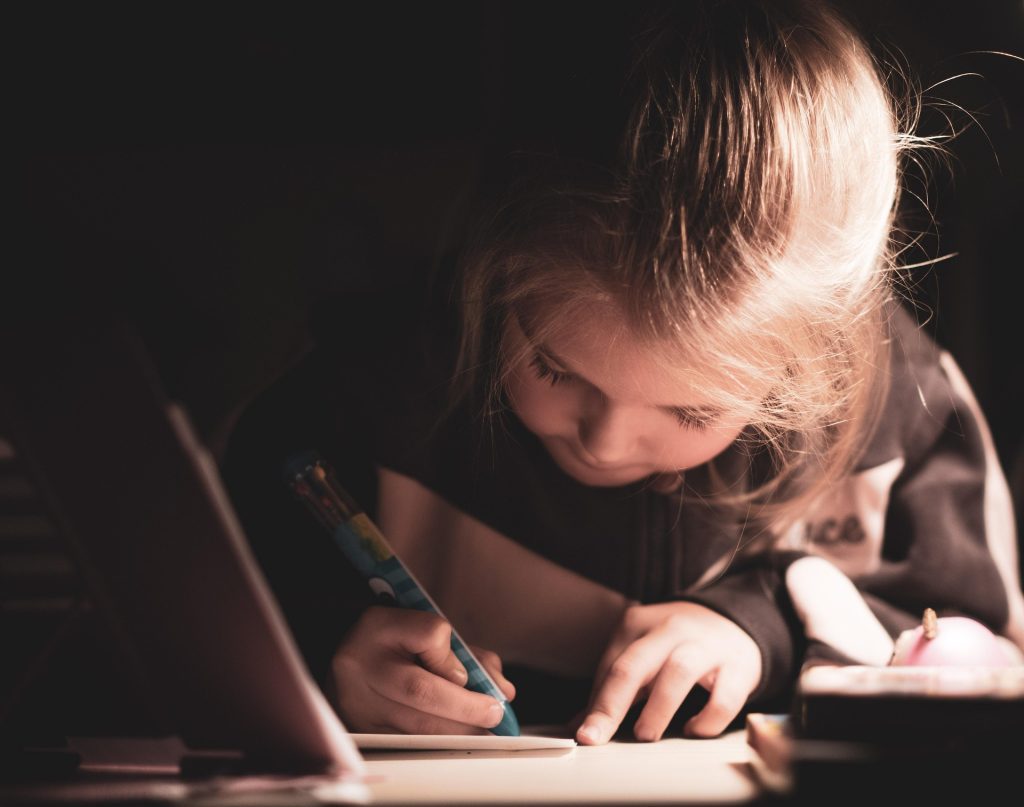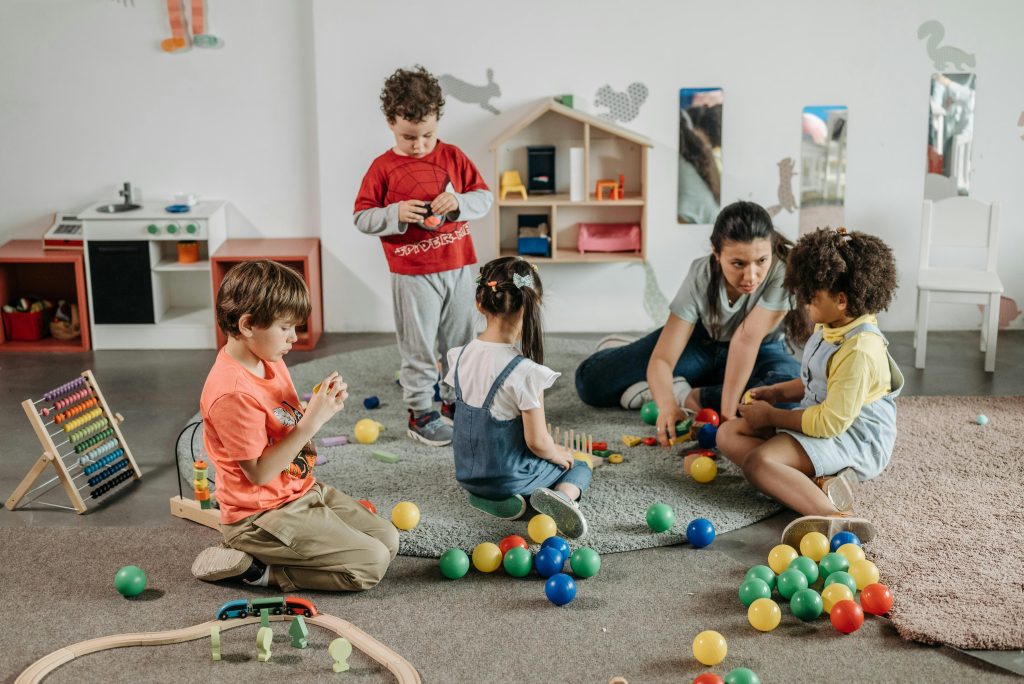Introduction: Every Child Learns Differently
The modern understanding of education is evolving. We’re slowly moving away from rigid, one-size-fits-all models toward approaches that recognize and celebrate neurodiversity — the natural variations in how human brains function. Autism, ADHD, dyslexia, sensory processing differences, and other neurodivergent profiles are not deficits; they are simply different ways of experiencing and interacting with the world.
Montessori education, with its flexible, child-centered approach, stands out as one of the most inclusive and empowering methods for supporting neurodiverse learners. Instead of trying to “fix” children to fit into the system, Montessori designs environments where children thrive as they are — honoring their strengths while gently guiding their growth.
In this blog, we’ll explore how Montessori principles align with the needs of neurodiverse children, how the classroom supports a range of learning profiles, and how this approach goes beyond labels to unlock true human potential.
What Is Neurodiversity?
Neurodiversity is the idea that neurological differences — like autism spectrum disorder (ASD), attention deficit hyperactivity disorder (ADHD), dyslexia, dyspraxia, Tourette’s syndrome, and others — are a natural and valuable part of human diversity.
Rather than pathologizing these conditions, the neurodiversity movement reframes them as variations, not disorders. Just as we celebrate biodiversity in nature, neurodiversity asks us to celebrate different brain types.
This perspective encourages educators and caregivers to move away from interventions that force conformity and instead focus on understanding individual strengths, challenges, sensory needs, and communication styles.
Why Traditional Models Often Fail Neurodiverse Learners
Conventional classrooms are typically designed for the neurotypical majority. They rely on:
- Sitting still for long periods
- Following group-paced instruction
- Responding quickly to verbal instructions
- Focusing amid noise and distraction
- Rigid routines with limited flexibility
For many neurodiverse learners, this structure can feel overwhelming, frustrating, or even inaccessible. They may be labeled “disruptive,” “behind,” or “unmotivated” when, in reality, the environment simply doesn’t match their way of learning.
Montessori, by contrast, turns this model on its head.
The Montessori Difference: A Natural Fit for Neurodiverse Brains
At its heart, Montessori is an individualized approach. The learning environment is designed to adapt to the child, not the other way around. Here’s how this benefits neurodiverse learners:
1. Freedom Within Structure
Children in Montessori classrooms have the freedom to:
- Choose their work
- Move about the room
- Engage with hands-on materials
- Work alone or with others
- Take breaks when needed
This freedom is paired with gentle guidance and clear boundaries, providing a safe container for children who crave both autonomy and predictability.
Neurodivergent children, especially those with ADHD or autism, often thrive in environments where they aren’t forced into rigid molds but are gently guided through consistent, meaningful routines.
2. Multi-Sensory Learning Materials
Montessori materials are intentionally designed to be:
- Tactile: beads, puzzle maps, sandpaper letters, and geometric solids invite touch
- Visual: color-coded materials enhance pattern recognition
- Auditory: sound cylinders, bells, and verbal lessons build auditory memory
- Kinesthetic: movement is embedded in learning tasks (e.g., carrying trays, rolling mats)
This multi-sensory approach is especially supportive for learners with sensory processing differences or dyslexia. It allows children to engage through their strongest modalities.
3. Self-Paced Progress
There’s no “race” in a Montessori classroom. There are no grades, no standardized tests, and no artificial deadlines.
A child can spend days or weeks mastering one material without being rushed. This allows:
- Children with slower processing speeds the time they need
- Learners with deep focus abilities to immerse in their interests
- Opportunities for repetition without stigma
This pacing creates a low-stress, low-anxiety learning experience, which is especially beneficial for children with anxiety, autism, or trauma histories.
4. Focus on Practical Life and Executive Function
One of Montessori’s hallmarks is its practical life curriculum — tasks like pouring, sweeping, dressing frames, food preparation, and cleaning.
These activities:
- Build coordination and concentration
- Foster independence and order
- Develop executive function skills: planning, sequencing, attention, and task completion
Executive dysfunction is common in ADHD and autism. Practical life work provides non-academic, hands-on pathways to develop these core skills in a way that feels meaningful and empowering to the child.
5. Freedom of Movement
Many neurodivergent learners need to move their bodies to focus or self-regulate. Montessori classrooms do not expect children to sit still for long periods. Instead, movement is:
- Encouraged
- Purposeful
- Integrated into every learning experience
This reduces behavioral conflicts and helps children stay regulated throughout the day.
6. Respect for Individuality
Montessori educators are trained to observe rather than control. They:
- Notice subtle cues
- Adjust lessons for each child
- Avoid comparing children to one another
- Treat the child with unconditional respect
Neurodiverse learners, who are often used to being “corrected” or misunderstood, flourish in environments where they are seen, accepted, and trusted.
Creating a Sensory-Sensitive Environment
Many neurodivergent children experience sensory sensitivities — hyper- or hypo-responsiveness to sounds, lights, textures, and smells.
Montessori environments are naturally:
- Uncluttered: everything has its place
- Calm and quiet: low noise levels are maintained
- Natural and neutral: wood, plants, and soft lighting are preferred over bright plastic and fluorescents
- Flexible: children can move to a quiet area when overwhelmed
These qualities help create a sensory-safe space, reducing meltdowns, shutdowns, or stress responses.
Additionally, materials can be adapted:
- Weighted blankets or lap pads for grounding
- Noise-cancelling headphones
- Alternate seating (e.g., wobble stools or floor cushions)
- Visual schedules and picture communication cards
These tools can be woven into the Montessori model without disrupting the flow of the classroom.
Mixed-Age Classrooms and Social Growth
Socialization is often a concern for neurodiverse children, especially those with autism or social communication differences. Montessori’s mixed-age model creates a natural scaffold:
- Younger children observe older peers modeling behavior
- Older children practice leadership and empathy
- Interactions are spontaneous, not forced
- Children work together, side-by-side, rather than in rigid group assignments
Social learning happens organically, with teachers available to coach, guide, or offer grace and courtesy lessons when needed. This helps neurodivergent children develop social confidence at their own pace, without the pressure of performance.
Going Beyond Labels
In Montessori classrooms, children are not labeled by diagnoses. There are no “special” or “regular” learners. Every child is unique, and their learning path is respected.
This label-free environment helps:
- Build self-esteem
- Encourage intrinsic motivation
- Foster a sense of belonging
- Avoid the “deficit lens” often used in traditional special education
Children are not defined by what they can’t do — they are supported in exploring what they can do.
Collaboration with Families and Specialists
While Montessori offers an inherently supportive structure, some neurodiverse learners benefit from additional support. The best environments:
- Collaborate with occupational therapists, speech-language pathologists, and counselors
- Use Individualized Education Plans (IEPs) or similar frameworks
- Provide regular, compassionate communication with parents
- Offer accommodations without shame or segregation
The goal is always inclusion — with sensitivity, creativity, and the child’s dignity at the center.
Challenges and Considerations
Montessori is not a magic cure. Supporting neurodiverse learners in any setting requires:
- Proper training: Not all Montessori-trained educators are fully equipped to recognize or respond to neurodivergence. Additional professional development is essential.
- Flexibility: Some Montessori purists may resist adaptations (e.g., breaking the three-hour work cycle, offering fidget tools). True inclusivity requires a balance between philosophy and practicality.
- Partnerships with parents: Open communication and shared understanding of a child’s needs create consistency between home and school.
- Resources and support: Staffing, funding, and space constraints may limit some schools’ ability to provide one-on-one support.
But these challenges are not insurmountable — and they pale in comparison to the rewards of seeing every child thrive.
How Parents Can Support Neurodiverse Learners Children with Montessori at Home
Montessori principles don’t belong only in schools. Parents can adopt similar strategies:
- Create order: Organize materials in accessible trays or baskets
- Offer choices: Let the child pick from a few activities
- Respect sensory needs: Provide quiet corners, sensory toys, dim lights
- Follow the child: Observe their interests and build learning around them
- Use visual supports: Daily schedules, routine cards, and labels help with transitions
- Encourage independence: Let children dress themselves, prepare food, and clean up with tools scaled to their ability
At home, just like in the classroom, the focus should be on empowering the child to feel safe, capable, and accepted.
Conclusion: A Model for Inclusive Education
Montessori education provides more than academic preparation — it offers a vision of what true inclusion can look like. In a world where neurodiverse learners are too often misunderstood or marginalized, Montessori environments offer:
- Respect without judgment
- Freedom without chaos
- Structure without rigidity
- Support without labels
By trusting the child, adapting the environment, and removing artificial limits, Montessori empowers every learner — neurotypical or neurodivergent — to flourish on their own terms.
Because when education sees difference as strength, we move closer to a world where all children are celebrated, supported, and seen.


